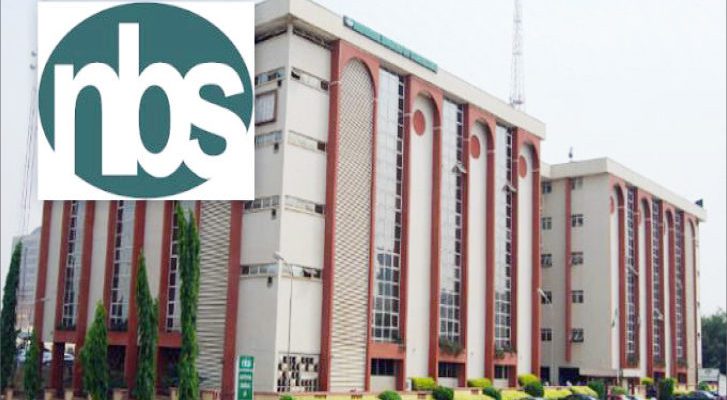The National Bureau of Statistics (NBS) disclosed in its Nigeria Labour Force Survey (NLFS) for Q2 2023, released in Abuja on Thursday that Nigeria’s unemployment rate rose to 4.2 percent in the second quarter of 2023 (Q2 2023).
The NBS defined unemployment rate as the share of the labour force that were not employed but were actively searching and were available for work.
The report put unemployment rate among persons with post-secondary education at 8.0 percent in Q2 2023.

The NBS said, “Those with upper secondary education was 5.4 percent, while those with lower secondary education was 3.7 percent, 3.0 percent for those with primary education and 2.5 percent for those with no formal education.”
Furthermore, it stated that the unemployment rate among youth aged (15-24 years) in Q2 2023 was 7.2 percent compared to the 6.9 percent recorded in Q1 2023, while it said unemployment rate among men was 3.5 percent and 5.9 percent among women in Q2 2023.
According to the NBS, “The unemployment rate in urban areas was 5.9 percent in Q2 2023, which was an increase from the 5.4 percent recorded in Q1 2023. While the unemployment rate in rural areas was 2.5 percent in Q2 2023, which was a decline from the 2.9 percent recorded in Q1 2023.”
It highlighted that time-related underemployment in Q2 2023 was 11.8 percent compared to 12.2 percent recorded in Q1 2023, explaining time-related underemployment rate as the share of employed people who were working less than 40 hours per week, but who would be willing and available to work more.

It also added that the labour force participation rate measures the share of a country’s working-age population that is in the labour force, while the labour force is the combination of those individuals who are employed and those who are unemployed.
“In Q2 2023, the labour force participation rate in Nigeria was 80.4 percent, having been 79.9 percent in Q1 2023. The Q2 2023 participation rate among men was 82.1 percent while for women the participation rate was 78.8 percent. The participation rate was 78.4 percent in urban areas and 82.6 percent in rural areas,” the report finds.
The highlight of the report shows that: “The labour force participation rate among the working-age population remained high at 80.4 percent in Q2 2023. The employment-to-population ratio was 77.1 percent in Q2 2023.”
“The combined rate of unemployment and time-related underemployment as a share of the labour force population (LU2) was 15.5 percent in Q2 2023. Most workers (around 88.0 percent) were in self-employment in Q2 2023. The proportion of workers in Wage Employment in Q2 2023 was 12 percent. The unemployment rate in Q2 2023 was 4.2 percent, this is an increase of 0.1 percent from the figure recorded in Q1 2023 (4.1 percent).
“The rate of unemployment among persons with post-secondary education was eight percent in Q2 2023. The Unemployment rate among youth aged (15-24 years) in Q2 2023 was 7.2 percent having been at 6.9 percent in Q1 2023. The Unemployment rate in urban areas was 5.9 percent in Q2 2023, an increase from 5.4 percent in Q1 2023.
“Time-related underemployment in Q2 2023 was 11.8 percent and 4.8 percent of the working-age population were in subsistence agriculture. Informal employment rate in Q2 2023 was 92.7 percent. Percentage of youth Not in Employment, Education nor Training (NEET
Rate) was 13.8 percent.”
The NBS explained that this is the third quarter of results since it revised and improved its methodology for collecting labour market statistics in Nigeria, and that the new methodology now aligned with internationally agreed standards and guidelines.
It stressed that labour market statistics are among the most important economic indicators and this makes the regular conduct of Nigeria Labour Force Survey (NLFS) crucial, noting that the NLFS is designed to gather key labour market statistics to support government policies and programmes for more effective planning.
The survey, it added provides up-to-date information on the dynamics of the labour market in the country as reliable labour market data can provide valuable insights about the economy for businesses and investors and can help in the design of sound economic policies to address the challenge of creating productive jobs and eliminating poverty; this can ultimately enhance the overall stability of the economy.
Labour is one of the most important factors of production and is a major determinant of the economic system globally. That is why it is imperative to know whether people are working or not, how long they work, and the nature of the jobs they are engaged in.
The NLFS enables key labour market statistics and the employment situation to be monitored periodically in Nigeria.
The NLFS aims to provide insight into the Nigerian economy, Indicators for policy formulation and a base for international comparison.
“The results presented here are based on the resolutions concerning statistics of work, employment, and underutilisation from the 19th International Conference of Labour Statisticians (ICLS 2013),” the NBS said.
READ ALSO FROM NIGERIAN TRIBUNE







